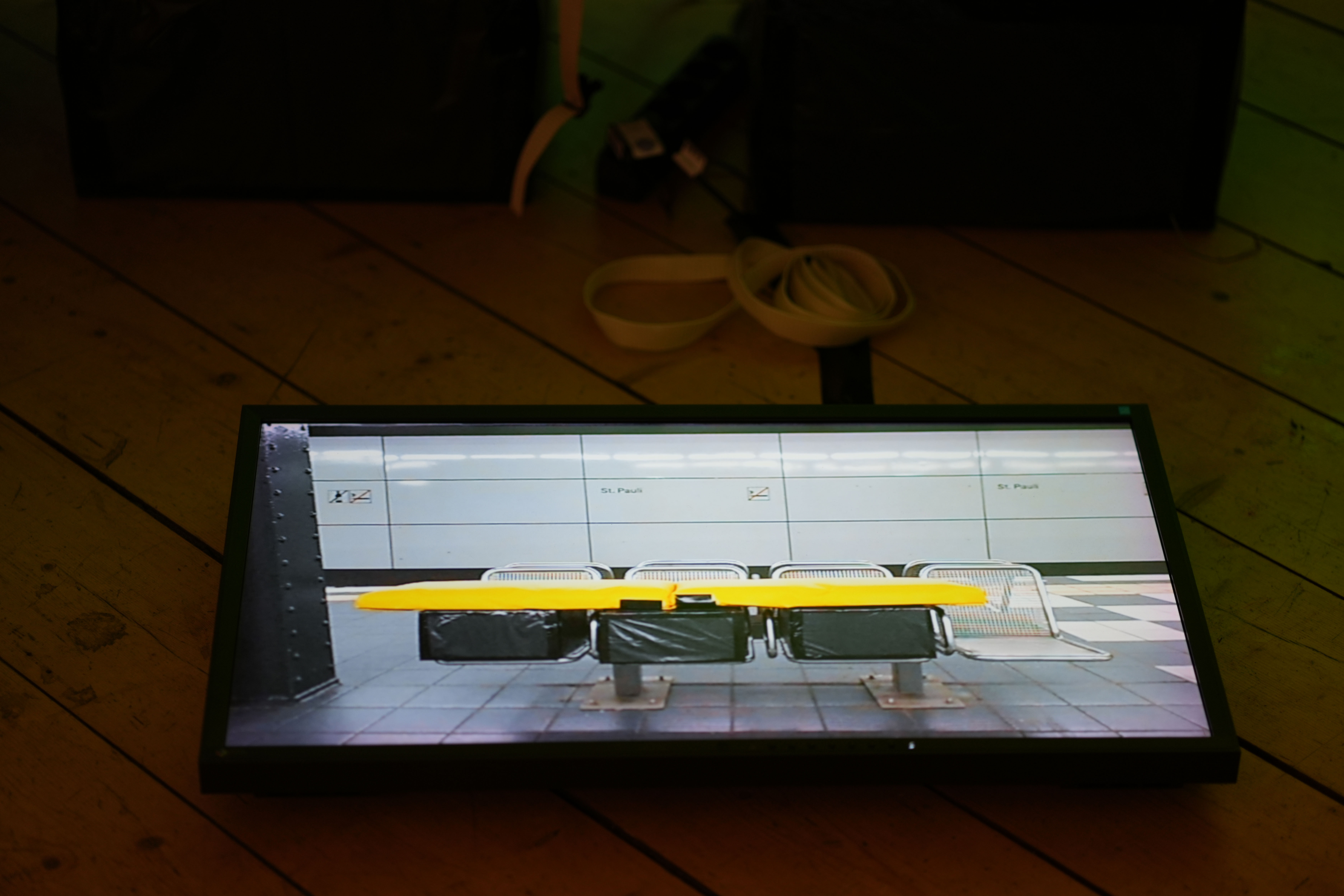
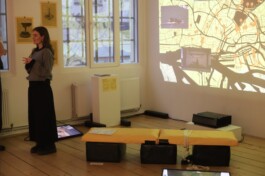
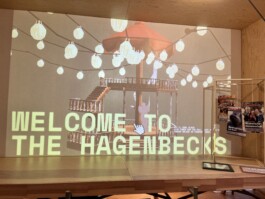
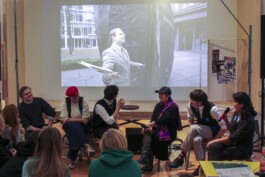
CRITICAL PUBLIC SPACE
The Laboratory for Critical Urban Design
Interactive exhibition
February 12, 2025, from 5 to 10 p.m.
February 13, 2025, from 4 to 8 p.m.
Who designs cities and for whom? With whom can we design cities ourselves? Who has a right to the city? How can we take up space and open it up? How can marginalized groups become urban designers?
Five collectives (consisting of 20 communication designers from HAW Hamburg in the field of time-based media) explore these questions in more detail and present proposals for the critical co-design of the city of Hamburg:
Why are there so many vacant properties in the city and how can they be used? How far are FLINTA* willing to go to reclaim safety? How should colonialism be addressed and communicated in the context of Baakenhafen? How will we remember tomorrow? How are homeless people being pushed out of the cityscape? What colonial power structures are hidden in an influential Hamburg family, and how can we deal with them?
In the CRITICAL PUBLIC SPACE LAB, such questions of public spaces are explored in terms of colonial continuities, power asymmetries, and structures of inequality, and renegotiated in speculative performances, interactive installations, and playful tools.
With and by Lucie Aravidis, Sibel Biçer, Flo Büchel, Pauline Electra Ernst, Salya Fink, Caroline Flor, Marieke Grupen, Mareike Hartmann, Pamier Hilal, Veronika Karpukhova-Woitas, Laura Kämper, Vanessa Köwing, Isabel Kopitzki, Ivan Lüt, Chiara Marcella, Hanna Ott, Laura Picklapp, Julie Schwartz, Neil Wittig, Sebastian Hagen Ziemann
Curation and a seminar by Kajan Luc, HAW Hamburg, Department Design, Kommunikationsdesign, Zeitbezogene Medien
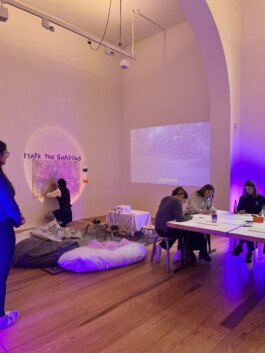
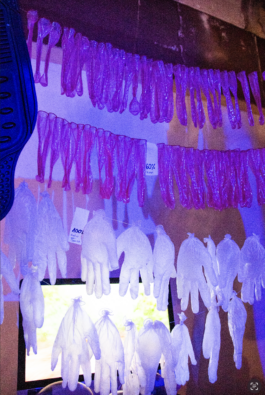
Kautschuk - Koloniale Spuren
Under what conditions is rubber produced?
von Emily Hein und Katrin Gass

silent stations
a participatory installation for weather simulation based on 19th century data from Cameroon collected by the German Naval Observatory
Vanessa Könemund, Lily Lemcke and Annette Schmid
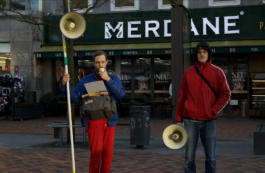
KOLONEO – A walk in search of neocolonial structures in urban space
Leonie Appold, Jascha Kretschmann, Levi Lange

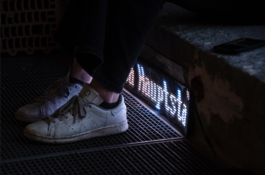
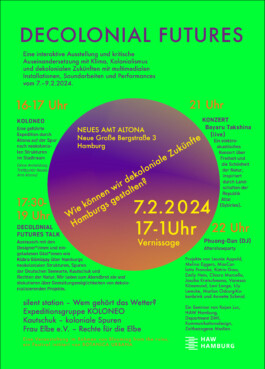
Curation: Kajan Luc

silent stations
Lily Lemcke, Vanessa Könemund, Annette Schmid
This station was about weather data from the former German Naval Observatory in Hamburg, which was collected primarily in Cameroon to "successfully" colonize countries by securing sea routes. Screens on the floor showing the location and 3D scans of a tree made it possible to delve into the topic, which continued to stimulate many exciting discussions. Who experienced the German Naval Observatory and its "doings"? Could a 100-year-old tree be a contemporary witness and become a place of remembrance for the history of the observatory? Who owns the weather?
According to the World Meteorological Organization, the United States and the EU together have 636 weather radar stations, while Africa has only 37 stations.
decolonial futures
design seminar, WiSe 2023–2024, Hamburg University of Applied Sciences
What if Hamburg is no longer a port city and we renounce global action? What local resources can we use in times of climate crisis? How do we feed ourselves? How do we live? How can we include „nature“ more in the city? What understanding of nature
do we need? How are colonialism today and the climate crisis connected and where is it visible in Hamburg? How can we prevent climate colonialism?
The course is the continuation of the art and research festival ↘KLIMASTRÖME.
In the continuation course „Decolonial Futures“, we would like to join together as design researchers and ask (urban) design questions of tomorrow: What will the resources of the future look like in Hamburg? How can we break away from colonial practices and create climate-just alternatives? At which places of memory can we intervene and what do we remember after the climate crisis? We design speculative futures and decolonial utopias locally in Hamburg and at the same time want to understand, clarify and communicate global contexts.
We question, illuminate and reject colonial understandings of nature. The projects will be developed transdisciplinarily with researchers, communities and organizations. For research, we go out into the city to get to know the forward-looking initiatives and probably to work together with them (HfMT Hamburg, Deutsches Hafenmuseum, others are requested).
Interactive installations, performances, interventions, sound works, audiovisual contributions, critical walks and mappings can be created, which will be shown to the public and cooperation partners in a final exhibition at the Blooming from the ruins Festival in February 2024.
A seminar and artistic direction by Kajan Luc
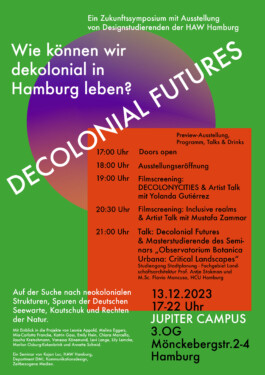
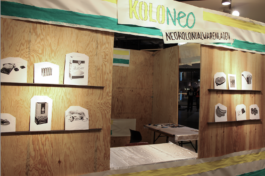
In KOLONEO, the neo-colonial goods store, everyday products such as batteries or watering cans and foodstuffs such as coffee and cocoa were critically examined for their colonial origins. In the neo-colonial goods store, visitors were also encouraged to solve various tasks that critically examined the JUPITER and its surroundings for colonial traces.
A project by Leonie Appold, Jascha Kretschmann, Levi Lange
KOLONEO, Leonie Appold, Jascha-Bela Kretschmann, Levi Lange
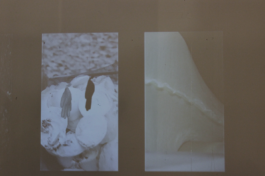
Kautschuk, Emily Hein, Katrin Gass
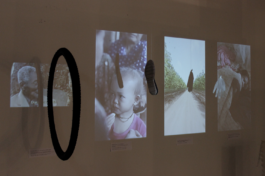
Kautschuk – Koloniale Spuren
What would a world without rubber look like? In the video installation "Kautschuk-Koloniale Spuren", a group of students asked themselves what would be missing from our everyday lives if there was no rubber. A bicycle without tires? A bed without a mattress? Shoes without soles? At the same time, they took a critical look at the production of this much-used material, which violates human rights, and raised questions about a tense relationship. Are we aware of how rubber is produced, what impact it has on people and nature and where rubber can be found in our everyday products?
A project by Emily Hein und Katrin Gass
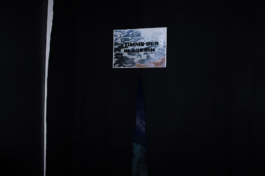
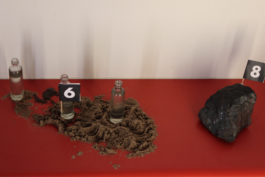
Frau Elbe e.V.
How do we deal with the Elbe if we were to see her as a person? Can the Elbe be a plaintiff? In the participatory installation "Our client the Elbe", which was set up in the former changing rooms, visitors to the exhibition slip into a court case and pass judgment on the role of the plaintiff, the Elbe, whose fundamental rights are being violated (deepening of the Elbe, water pollution, impact of the climate crisis).
A project by Melina Eggers, Mia-Carlotta Francke, Chiara Marcella
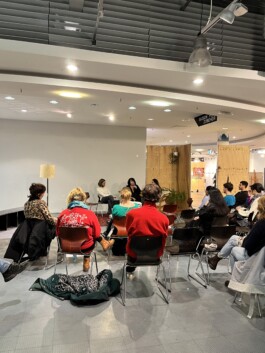
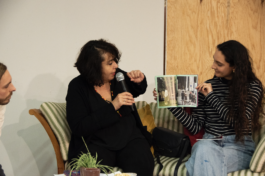
Yolanda Gutiérrez – Filmscreening & Artist talk DECOLONYCITIES

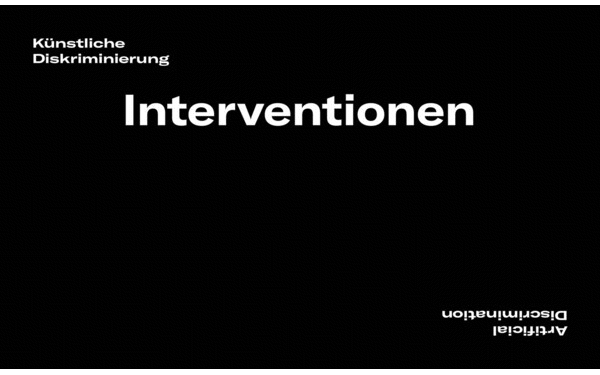
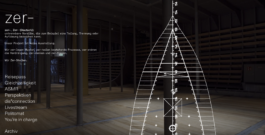
zerdokumentation.cargo.site
design seminar PEKING, 2020-2021, HAW Hamburg, communication design
As students of the HAW Hamburg DMI, they were invited by the director of the Hafenmuseum Hamburg, Ursula Richenberger, to design and subsequently realise a (temporary) exhibition on the ship PEKING, that will be located at the future 'Deutsches Hafenmuseum' in Hamburg. Based on the function of the steel four-master, the students came across numerous topics that seemed interesting and relevant to us contextually, both to the development of global shipping and the accompanying change in global power, financial and social structures
Teaching team
Prof. Almut Schneider, Prof. Dr. Alice Lagaay, Søren Koswig and studioding
Student works
Bent Nühlen, Josefine Van Aertryck, Luisa Kiendl, Marieke Plettner, Mustafa Zammar, Schima Köchermann und Sebastian Ziemann
Video cutting
Luisa Kindl
Cooperation
Deutsches Hafenmuseum, Ursula Richenberger
Work (on the bottom left side) of
Josefine Van Aertryck
